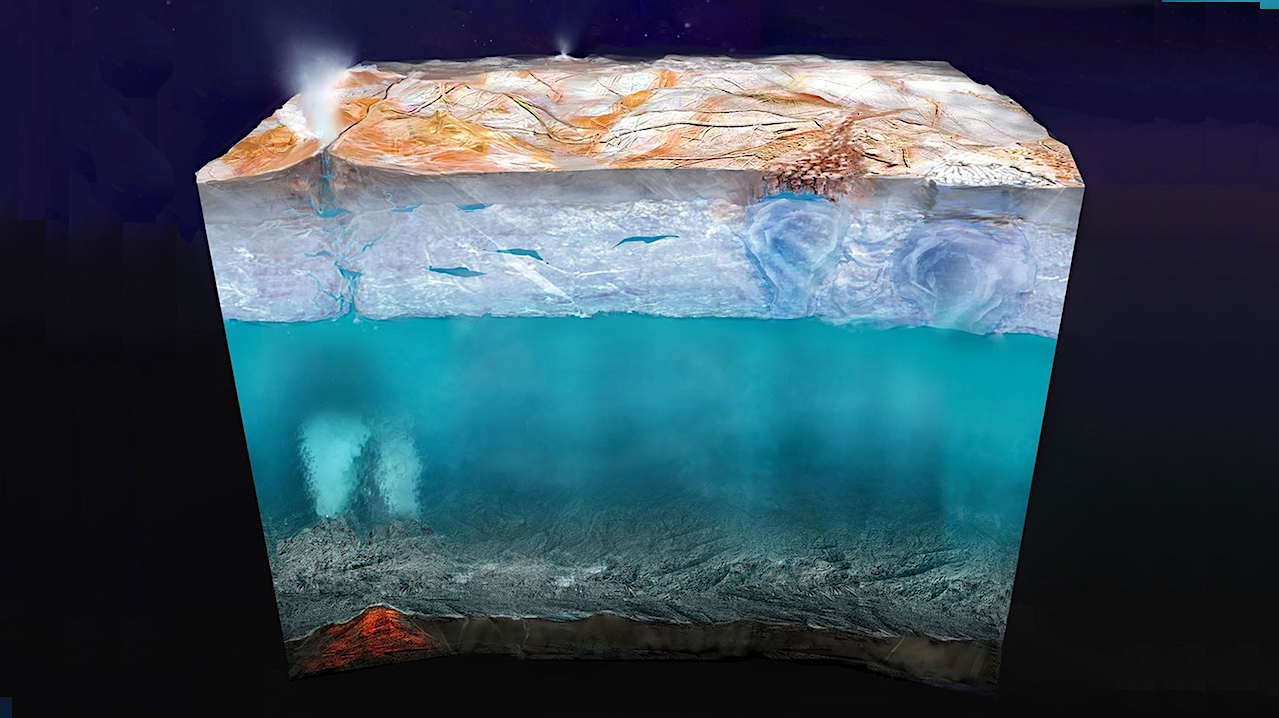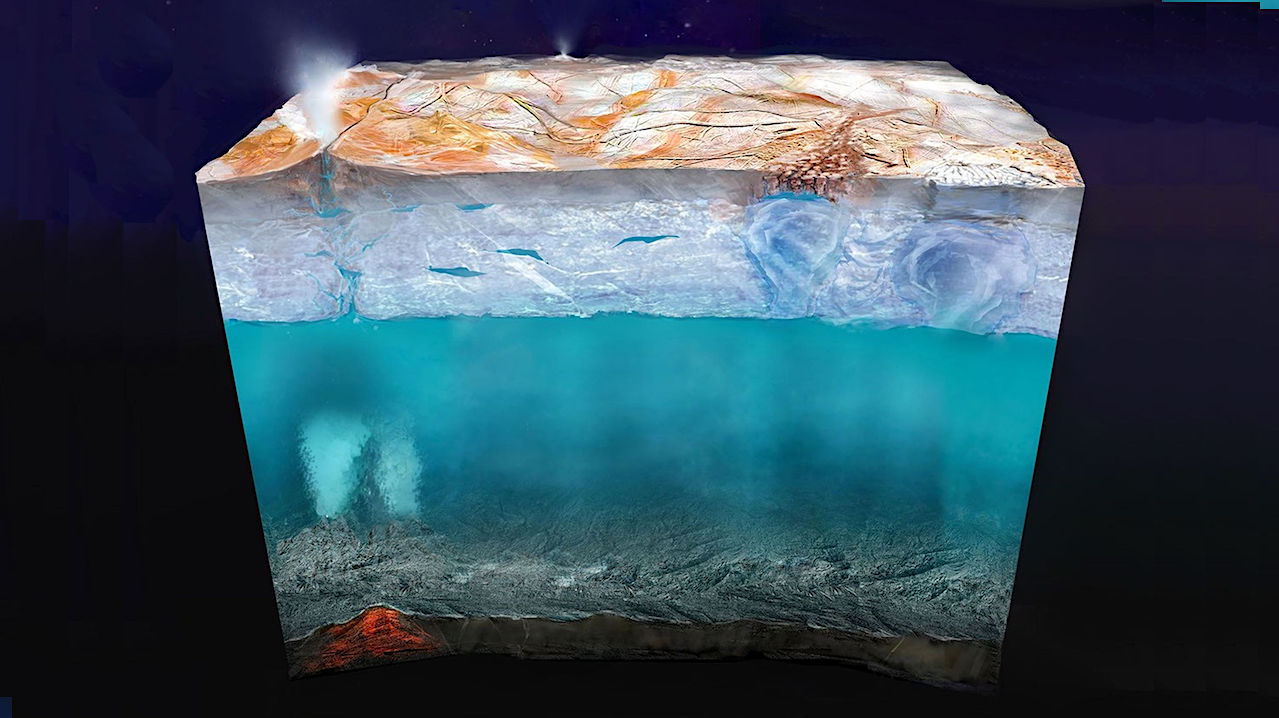Now Reading: Slantwise Convection And Heat Transport In The Icy Moon Oceans
-
01
Slantwise Convection And Heat Transport In The Icy Moon Oceans
Slantwise Convection And Heat Transport In The Icy Moon Oceans


Scientists think that under the icy surface of Jupiter’s moon Europa a saltwater ocean exists that may contain more than twice as much liquid water as all of Earth’s oceans combined. NASA/JPL-Caltech
Ocean heat transport on icy moons shapes the ice shell topography, a primary observable of these moons. Two key processes control the heat transport: baroclinic instability driven by surface buoyancy contrasts and convective instability driven by heating from the core.
However, global ocean simulations cannot accurately resolve convection under realistic icy moon conditions and instead often use Earth-based convective parameterizations, which capture only vertical convective mixing and cannot represent rotation-aligned slantwise convection on icy moons.
We use high-resolution convection-resolving simulations to investigate ocean heat transport by slantwise convection in a parameter regime relevant to icy moons, isolated from baroclinic instability. Total heat transport follows the Coriolis-Inertial-Archimedean scaling with an added latitude dependence. The vertical transport increases with latitude, and the meridional transport is poleward.
These results indicate that slantwise convection redistributes heat toward the poles, favoring a poleward-thinning ice shell, qualitatively consistent with Enceladus’s observed ice thickness distribution.
Yaoxuan Zeng, Malte F. Jansen
Subjects: Earth and Planetary Astrophysics (astro-ph.EP)
Cite as: arXiv:2508.06480 [astro-ph.EP] (or arXiv:2508.06480v1 [astro-ph.EP] for this version)
https://doi.org/10.48550/arXiv.2508.06480
Focus to learn more
Submission history
From: Yaoxuan Zeng
[v1] Fri, 8 Aug 2025 17:37:12 UTC (2,890 KB)
https://arxiv.org/abs/2508.06480
Astrobiology,
Stay Informed With the Latest & Most Important News
Previous Post
Next Post
-
 012024 in Review: Highlights from NASA in Silicon Valley
012024 in Review: Highlights from NASA in Silicon Valley -
 02Panasonic Leica Summilux DG 15mm f/1.7 ASPH review
02Panasonic Leica Summilux DG 15mm f/1.7 ASPH review -
 03How New NASA, India Earth Satellite NISAR Will See Earth
03How New NASA, India Earth Satellite NISAR Will See Earth -
 04And Thus Begins A New Year For Life On Earth
04And Thus Begins A New Year For Life On Earth -
 05Astronomy Activation Ambassadors: A New Era
05Astronomy Activation Ambassadors: A New Era -
06SpaceX launch surge helps set new global launch record in 2024
-
 07Space Force plans new ‘Futures Command’ amid pressure to speed up modernization
07Space Force plans new ‘Futures Command’ amid pressure to speed up modernization





















